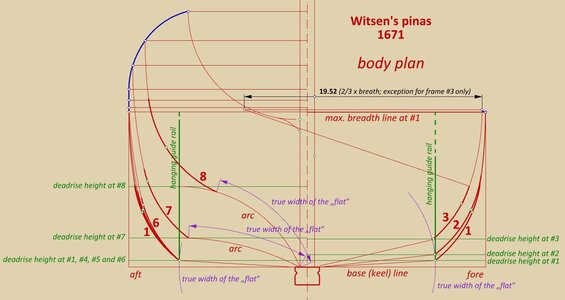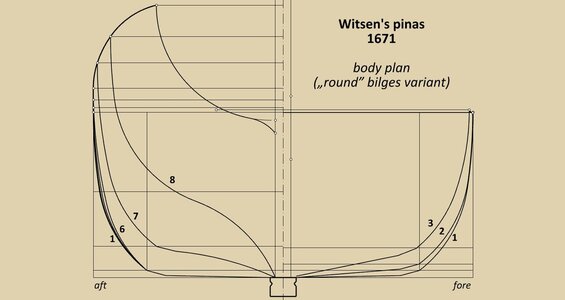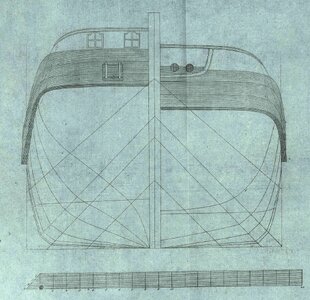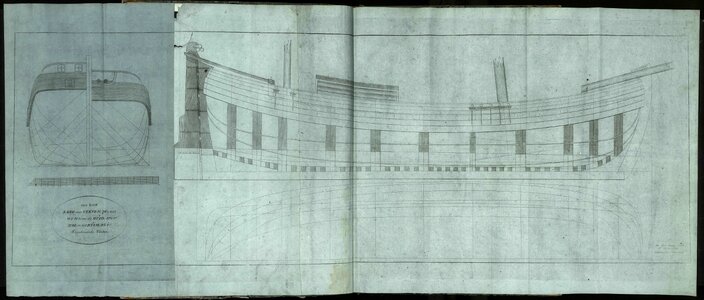.
* * *
Body plan. The body plan has been drawn in exactly the same way as described in both my threads on fluits, i.e. futtock sweeps for almost all frames (except for frame #3) are of the same radius, and bilge sweeps for all frames are of the same radius as well. The bilge sweeps (thicker red lines) connect futtock sweeps (tangentially) and the „flat”, terminating at its edge (not tangentially). The only real novelty for the readers may be that the actual width of the 'flat' was determined not in a straight line in the case of its curved cross-sections, but along this curved line, which is shown in the diagram.
The coordinates given by Witsen are marked as small circles. As mentioned earlier, they are intended for shipyard workers and mark the boundary of groups of planks laid in successive, separate stages of the ship's construction. It would be difficult to demand an even better correspondence between these co-ordinates and the reconstructed hull lines, so consequently the design method presented.

.
Last edited:









